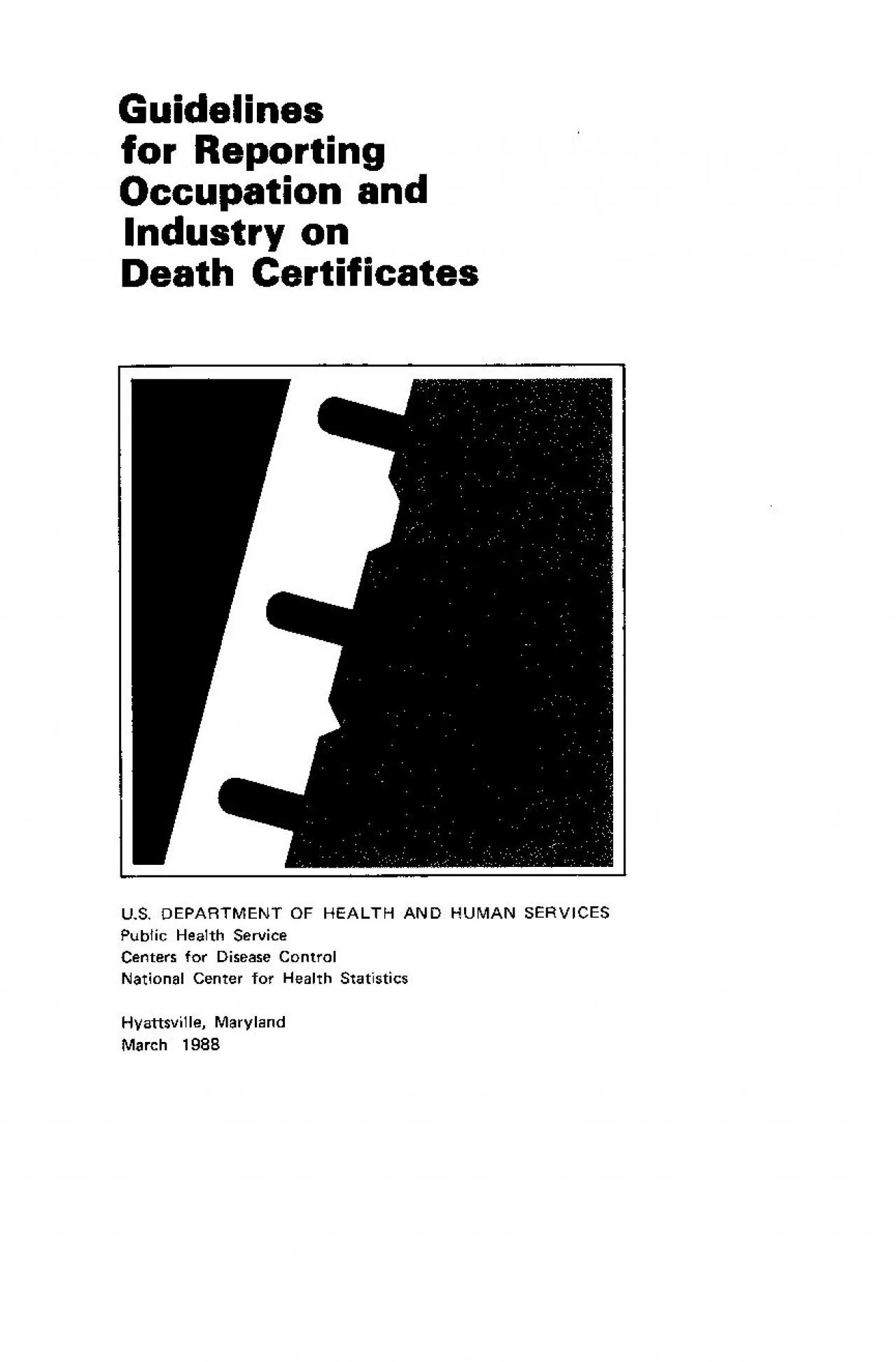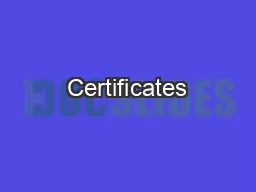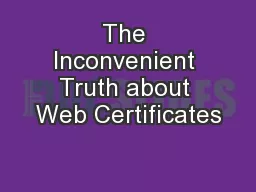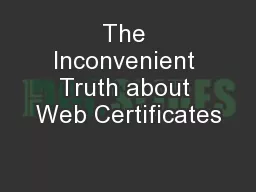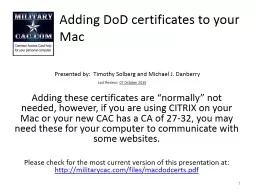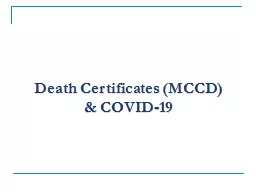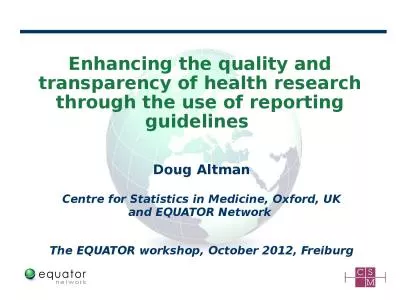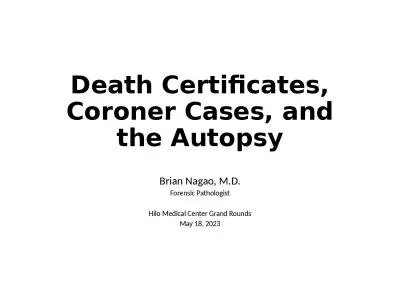PDF-Guidelines for Reporting Occupation and Industry on Death Certificates
Author : melody | Published Date : 2021-09-24
US DEPARTMENT OF HEALTH AND HUMAN SERVICES Public Health Service Centers for Disease Control National Center for Health Statistics Hyattsvi I le Maryland March 1988
Presentation Embed Code
Download Presentation
Download Presentation The PPT/PDF document "Guidelines for Reporting Occupation and ..." is the property of its rightful owner. Permission is granted to download and print the materials on this website for personal, non-commercial use only, and to display it on your personal computer provided you do not modify the materials and that you retain all copyright notices contained in the materials. By downloading content from our website, you accept the terms of this agreement.
Guidelines for Reporting Occupation and Industry on Death Certificates: Transcript
Download Rules Of Document
"Guidelines for Reporting Occupation and Industry on Death Certificates"The content belongs to its owner. You may download and print it for personal use, without modification, and keep all copyright notices. By downloading, you agree to these terms.
Related Documents

